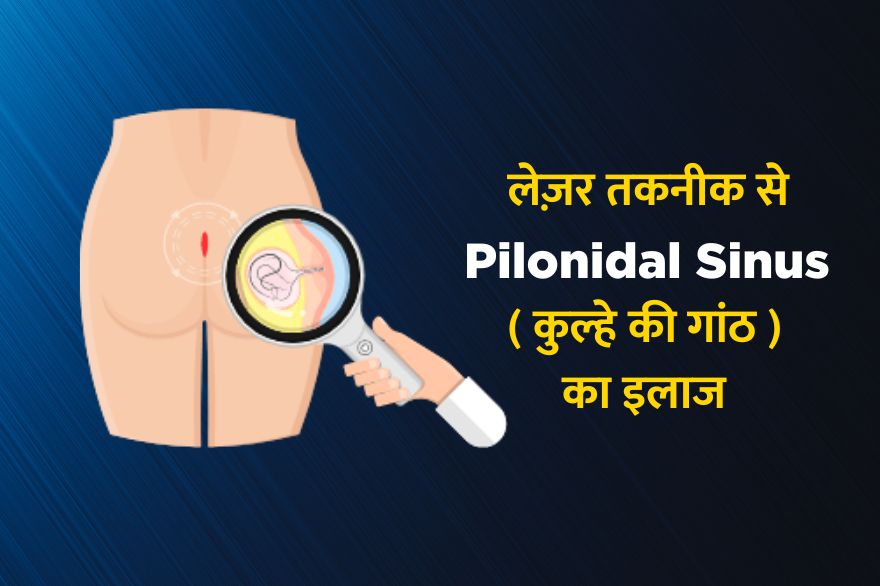
Pilonidal Sinus
Pilonidal Sinus: Symptoms, Prevention, and Treatment
Pilonidal sinus is a condition characterized by the development of a small tunnel or tract beneath the skin, typically in the natal cleft (the area between the buttocks). It can occur due to the accumulation of hair, debris, or infection in the skin follicles, leading to the formation of a cyst or abscess. In this article, we will explore the symptoms, prevention, and treatment options for pilonidal sinus.
Symptoms of Pilonidal Sinus:
– Pain and swelling: Individuals with pilonidal sinus may experience pain and swelling in the natal cleft, especially when sitting or during physical activities.
– Redness and tenderness: The affected area may appear red and feel tender to the touch.
– Discharge: Pilonidal sinus can lead to the formation of pus or fluid-filled abscesses, resulting in drainage from the sinus opening.
– Fever: In more severe cases, individuals may develop a fever due to infection.
Prevention of Pilonidal Sinus:
While pilonidal sinus cannot always be completely prevented, there are steps that can be taken to reduce the risk of its occurrence or recurrence:
– Proper hygiene: Keeping the area clean and dry can help prevent the accumulation of debris and reduce the risk of infection.
– Avoid sitting for prolonged periods: Taking breaks and avoiding sitting for long hours can minimize pressure on the natal cleft and reduce the risk of pilonidal sinus development.
– Hair removal: Regularly removing excess hair in the natal cleft area can prevent hair from becoming trapped and reduce the likelihood of pilonidal sinus formation.
Treatment of Pilonidal Sinus:
The treatment for pilonidal sinus may vary depending on the severity of the condition. Treatment options include:
– Incision and drainage: For mild cases, a small incision may be made to drain the abscess and promote healing.
– Antibiotics: In cases of infection, antibiotics may be prescribed to treat the underlying bacterial infection.
– Surgical excision: In recurrent or severe cases, surgical removal of the sinus tract and surrounding tissues may be necessary to prevent further complications.
It is essential to seek medical attention if you experience symptoms suggestive of pilonidal sinus. Early diagnosis and appropriate treatment can help manage the condition effectively and reduce the risk of complications.
Please note that the information provided in this article is for informational purposes only and should not be considered a substitute for professional medical advice. If you suspect you have pilonidal sinus or any other medical condition, consult a healthcare professional for proper evaluation and treatment.
पिलोनिडल साइनस: लक्षण, रोकथाम और उपचार
पिलोनिडल साइनस एक ऐसी स्थिति है जो त्वचा के नीचे एक छोटी सुरंग या पथ के विकास की विशेषता है, आमतौर पर नेटल फांक (नितंबों के बीच का क्षेत्र) में। यह त्वचा के रोम में बालों, मलबे या संक्रमण के जमा होने के कारण हो सकता है, जिससे सिस्ट या फोड़ा बन सकता है। इस लेख में, हम पाइलोनिडल साइनस के लक्षण, रोकथाम और उपचार के विकल्पों का पता लगाएंगे।
पिलोनिडल साइनस के लक्षण:
– दर्द और सूजन: पाइलोनिडल साइनस वाले व्यक्तियों को नेटल क्लीफ्ट में दर्द और सूजन का अनुभव हो सकता है, खासकर बैठने पर या शारीरिक गतिविधियों के दौरान।
– लालिमा और कोमलता: प्रभावित क्षेत्र लाल दिखाई दे सकता है और छूने पर कोमल महसूस हो सकता है।
– डिस्चार्ज: पिलोनाइडल साइनस से मवाद या तरल पदार्थ से भरे फोड़े बन सकते हैं, जिसके परिणामस्वरूप साइनस के उद्घाटन से जल निकासी हो सकती है।
– बुखार: अधिक गंभीर मामलों में, व्यक्तियों को संक्रमण के कारण बुखार हो सकता है।
पिलोनाइडल साइनस की रोकथाम:
हालाँकि पाइलोनिडल साइनस को हमेशा पूरी तरह से रोका नहीं जा सकता है, लेकिन इसके होने या दोबारा होने के जोखिम को कम करने के लिए कुछ कदम उठाए जा सकते हैं:
– उचित स्वच्छता: क्षेत्र को साफ और सूखा रखने से मलबे के संचय को रोकने और संक्रमण के खतरे को कम करने में मदद मिल सकती है।
– लंबे समय तक बैठने से बचें: ब्रेक लेने और लंबे समय तक बैठने से बचने से नेटल क्लीफ्ट पर दबाव कम हो सकता है और पाइलोनिडल साइनस के विकास का खतरा कम हो सकता है।
– बाल हटाना: नियमित रूप से नेटल क्लीफ्ट क्षेत्र में अतिरिक्त बाल हटाने से बालों को फंसने से रोका जा सकता है और पाइलोनिडल साइनस बनने की संभावना कम हो सकती है।
पिलोनिडल साइनस का उपचार:
पाइलोनिडल साइनस का उपचार स्थिति की गंभीरता के आधार पर भिन्न हो सकता है। उपचार के विकल्पों में शामिल हैं:
– चीरा और जल निकासी: हल्के मामलों के लिए, फोड़े को निकालने और उपचार को बढ़ावा देने के लिए एक छोटा चीरा लगाया जा सकता है।
– एंटीबायोटिक्स: संक्रमण के मामलों में, अंतर्निहित जीवाणु संक्रमण के इलाज के लिए एंटीबायोटिक्स निर्धारित की जा सकती हैं।
– सर्जिकल छांटना: बार-बार होने वाले या गंभीर मामलों में, आगे की जटिलताओं को रोकने के लिए साइनस पथ और आसपास के ऊतकों को सर्जिकल रूप से हटाना आवश्यक हो सकता है।
यदि आप पाइलोनिडल साइनस के लक्षणों का अनुभव करते हैं तो चिकित्सकीय सहायता लेना आवश्यक है। शीघ्र निदान और उचित उपचार स्थिति को प्रभावी ढंग से प्रबंधित करने और जटिलताओं के जोखिम को कम करने में मदद कर सकता है।
कृपया ध्यान दें कि इस लेख में दी गई जानकारी केवल सूचनात्मक उद्देश्यों के लिए है और इसे पेशेवर चिकित्सा सलाह का विकल्प नहीं माना जाना चाहिए। यदि आपको संदेह है कि आपको पाइलोनिडल साइनस या कोई अन्य चिकित्सीय स्थिति है, तो उचित मूल्यांकन और उपचार के लिए किसी स्वास्थ्य देखभाल पेशेवर से परामर्श लें।
